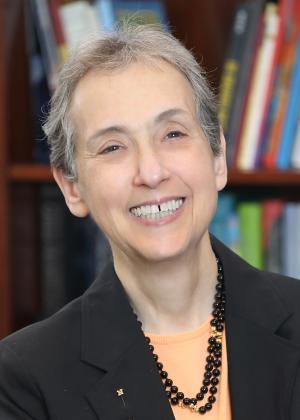From the Deputy Director for Intramural Research

DDIR Nina Schor
Before the Curtain Rises
Readying the public—and ourselves—for open access
We are embarking on a fundamental change in how scientific information is shared with the world. As of July 1, all NIH-funded research appearing in scientific journals must be made freely and publicly accessible as soon as it is published. On its face, this may sound like progress. But if we are not careful—if we do not prepare both the scientific community and the public for what this change means—we may inadvertently damage the trust we hope to build.
To be clear, we are about to release information to the world before the scientific community has had the opportunity to digest it. That is, before we have had time to argue, to question, to refine and resolve our interpretations; before we’ve been able to check each other’s work or place it in a broader, coherent scientific framework; and crucially, before the public has been given any meaningful introduction to how science is actually conducted.
How does science work?
Much of the public thinks of science as a vehicle that delivers the truth, the whole truth, and nothing but the truth on a road that looks like a straight line. But no scientist worth their salt believes that. Still, too many of us hesitate to correct this misconception when we encounter it. In fact, some may unintentionally reinforce it. I mean, how come scientists are always arguing about what the truth actually is and the next generation of scientists always seems to prove the previous generation wrong?
At its very best, scientists use the tools they have to arrive at a best guess proposal—a hypothesis—for how something works or what is going on and then use other tools to examine the experimental situation and a “normal” situation—the control—to test the hypothesis. It is not possible to definitively say that results prove that the hypothesis is right, because although the results may be consistent with the hypothesis, there may be other hypotheses that are also consistent with the results. In other words, science cannot unambiguously determine how something works. It can only unambiguously determine how it does not work.
Thus, negative (or null) results—the ones in which the experiment “fails”—are critically important because they eliminate one best guess from consideration and allow scientists to move on to testing an alternative best guess. Through this process, scientists develop models for how things really work that, in the best-case scenario, come increasingly close to the truth, with a capital “T”. The very best scientists challenge each model with other experiments that try to prove the model wrong. If they do not prove it wrong, they have not proved it right! They have just proved that their model is one possibility for how the Truth works.
Other scientists then propose other models and test them, too. When more than one model is consistent with experimental results, often, teams of scientists work together to see whether one gives results that are closer to what is observed in nature than the other, or whether the consequences of the two different models converge at the same exact outcome.
Is it any wonder that, for example, how we thought the virus that causes COVID-19 spread was different in 2020 than in 2023? With a public health emergency and not enough information to even make a best guess, some thought it best to hedge our bets and avoid every kind of contact with possible sources and spreaders of the virus. As, over the ensuing few years, we both learned more about how the virus spreads and developed methods to decrease likelihood of infection and prevent serious illness if we did get infected, public health advisors were able to zero in on what did or did not need to be done to keep us as safe as was possible. All the while, the virus itself was changing by a process we call mutation. In fact, the target continues to mutate as you read this! Some business we are all in, huh?
These uncertainties and challenges and misperceptions of those who are not scientists are what makes it exciting for us to do research, to teach, to mentor, and to write, both for other scientists and for the public. But they are also what makes it critically important that we take the time to listen and respond in appropriate language and with honesty, humility, and respect to what the public needs, thinks, and fears. Effective science in the public interest depends utterly on effective dialogue.
I hope that you and I will do everything we can to enter into this dialogue with neighbors, friends, family—anyone who has a question, a concern, or a need to talk. To neglect this dialogue as part of our civic duty as scientists and people is to endanger both science and those we and it serve. And as the new mandate of open access demands, we must start doing this now.
This page was last updated on Monday, July 21, 2025
